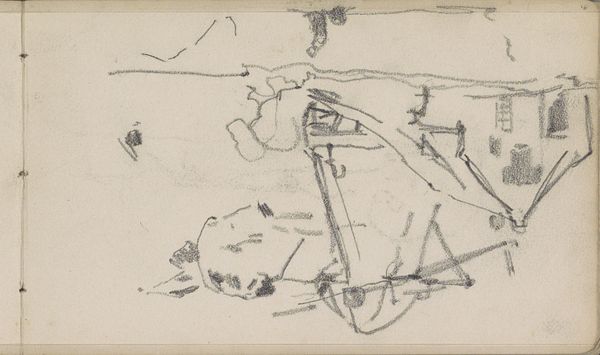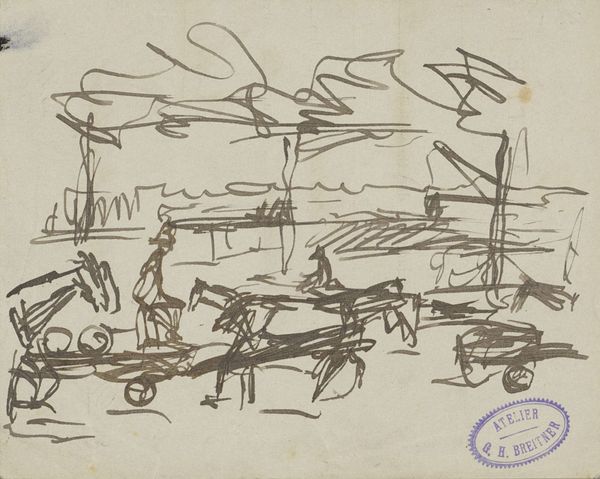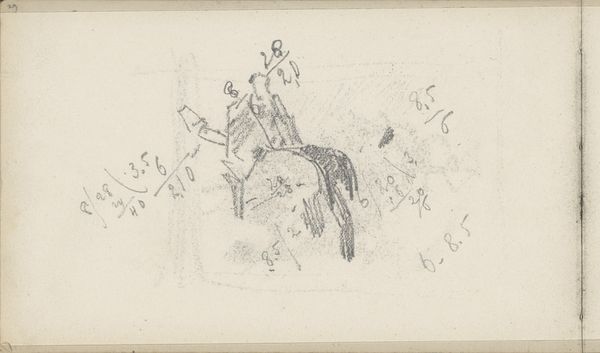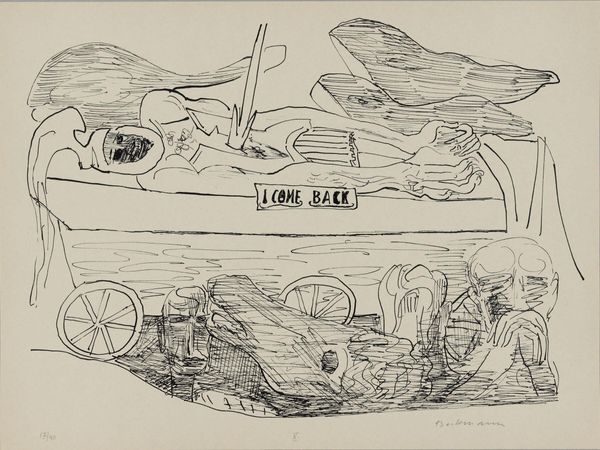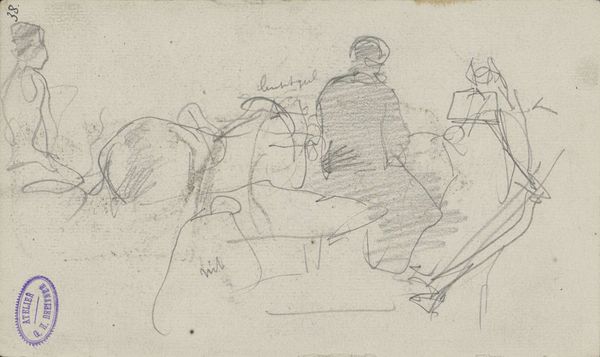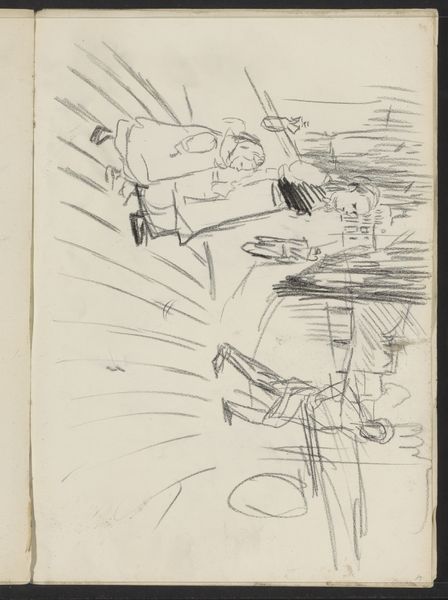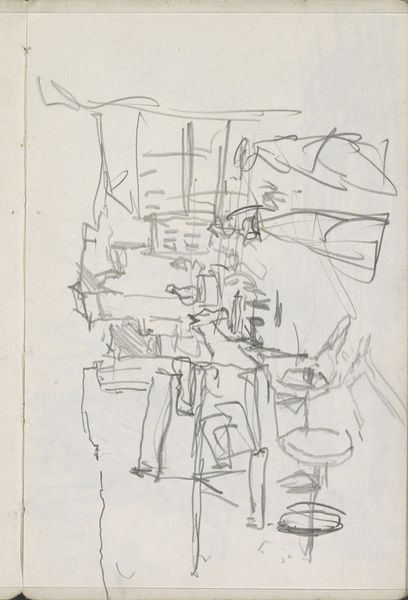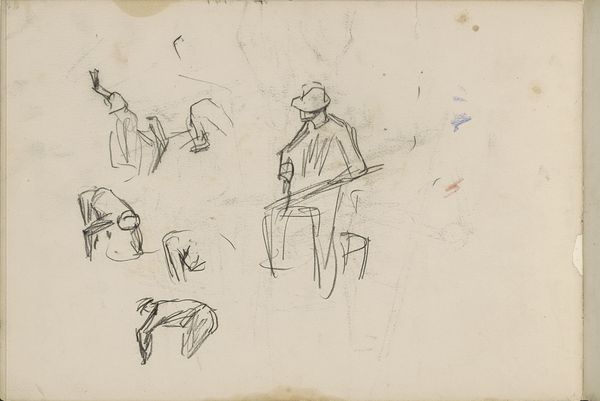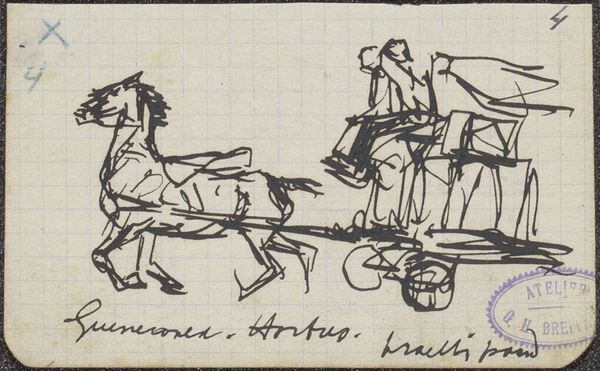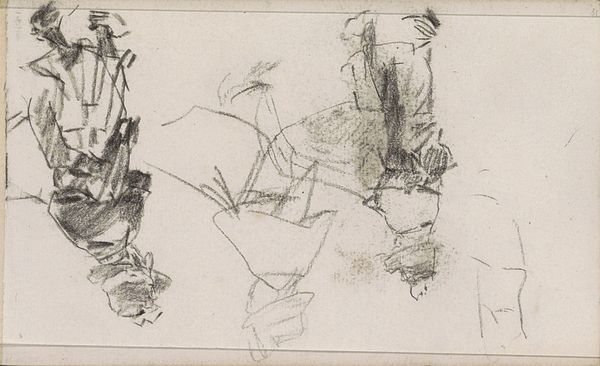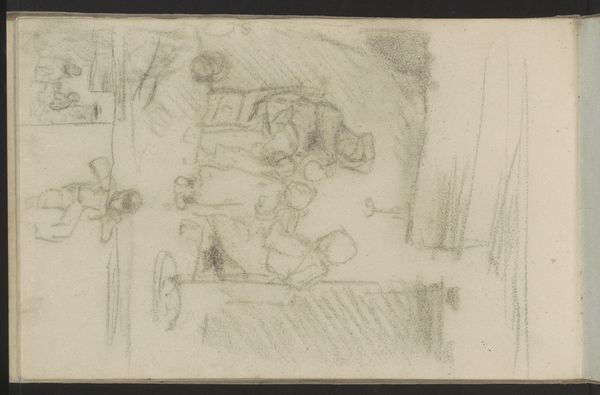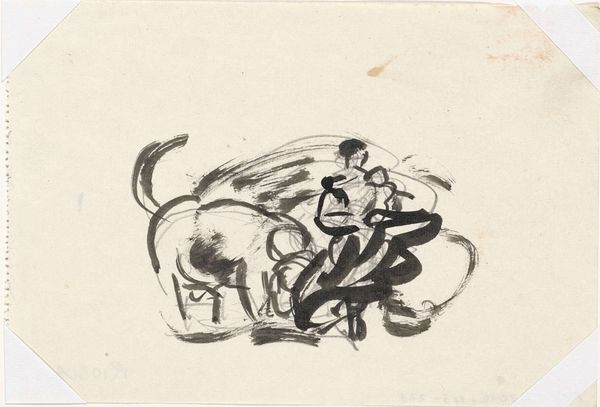
Dimensions: height 90 mm, width 139 mm
Copyright: Rijks Museum: Open Domain
Curator: Let’s turn our attention to this captivating postcard, a work by Leo Gestel entitled “Briefkaart aan Henriëtte Johanna Petronella van Hilten," created before 1916. It’s currently housed right here in the Rijksmuseum. Editor: Immediately striking! The spontaneous energy is delightful—it feels like a quickly captured moment, perhaps a goodbye scene? The bicycles give the eye a sense of direction. Curator: Precisely. Gestel used ink and watercolor to produce this incredibly swift composition, capturing figures in motion against the backdrop of, presumably, Amsterdam. The application of media communicates an immediacy. Editor: I am interested in what seem like ordinary citizens presented within this dynamic setting; who might they be? It seems almost political, considering Gestel’s location here within a major metropolitan hub during war. What purpose could Gestel have for capturing daily life, for Henriëtte and possibly wider distribution? Curator: Interesting point. The inscription "Good weather" indicates, at least ostensibly, a snapshot of ordinary life rather than an outright social statement. The contrast between the carefully delineated figures and the scrawled handwriting produces another dynamic. Editor: A fair assessment. But let us not dismiss the act of documentation itself, in times of upheaval and unease! Who dictates where focus falls is, always, significant, here and throughout art history. Are the bicycle commuters, each possessing distinct attributes of garb and bearing, a metaphor for national resilience in the face of WWI turmoil? Perhaps it is a simple letter. Gestel himself may have desired such reading, if the inscription ‘Amsterdam bridge. Louis has got into a glass bottle, many greetings’ tells anything regarding intent or message here within. Curator: That consideration infuses depth to our reading of the image as document. Regardless, the swiftness and seeming insouciance belie the subtle orchestration. Observe, too, the positioning of the hearts beside ‘Aftocht’. Even amidst implied gloom Gestel imbues hope and affection toward its receiver and its figures, humanizing the work for both contemporary viewers, and Henriëtte as its initial receiver. Editor: It’s difficult, at times, not to project when confronting historical artworks; still, engaging with historical context makes for productive engagement—thank you. Gestel, here, asks for, if nothing else, prolonged attention paid to detail. Curator: Indeed. A seemingly fleeting image yields profound insight, reminding us that even informal artworks such as these grant rich possibilities for observation.
Comments
No comments
Be the first to comment and join the conversation on the ultimate creative platform.
